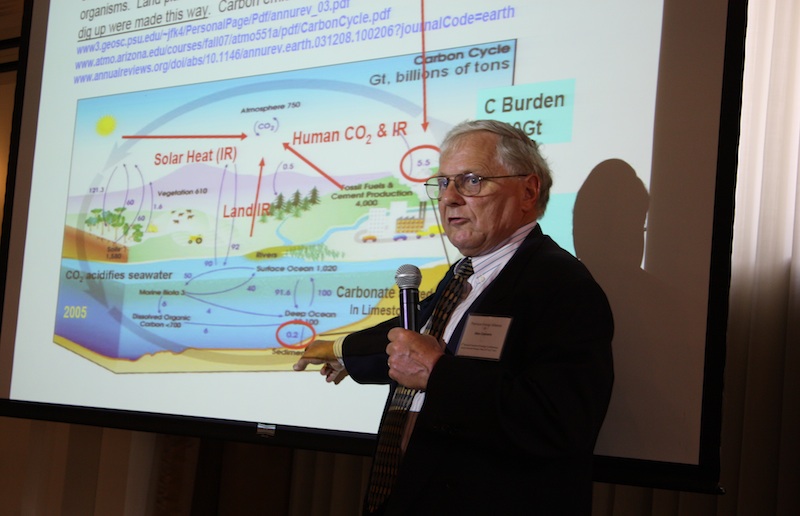How a novel nuclear reactor can combat ocean acidification


While global warming rightfully gets plenty of attention from those worried about the consequences of CO2 emissions, there's another carbon scourge that could have even more disastrous consequences: Ocean acidification.
In three simple sentences: As much as half of the CO2 that man emits ends up in the seas, where it turns into carbonic acid that makes it difficult for anything with a shell or skeleton - say, a fish or a crustacean - to grow. The carbonic acid deprives the creatures of the carbonates they need to calcify -- to build strong bones. Acidification is even threatening certain plankton, the foundation of the ocean's food chain, so it could potentially starve larger creatures that it doesn't immediately weaken.
After holding steady for about 300 million years, the oceans' averages acidity has soared by about 30 percent since the onset of the industrial era, according to the U.N.-backed Ocean Acidification Network. It's not acidic per se. It's still in the "alkaline" portion of the pH scale at around 8.1, but if it keeps heading in the acidic direction, oops, there goes sea life as we know it. The ramifications of that are huge. Over a billion people rely on the sea for their main source of food protein according to the U.S. National Oceanic and Atmospheric Administration, and hundreds of millions of people work in the fishing industry.
Dr. Alex Cannara has a solution: Molten salt nuclear reactors (MSRs), which can serve both direct and indirect roles in the attack on acid.
MSRs, as I've written often, are reactors that use liquid fuel rather than the solid rods of conventional reactors. They cannot melt down, they operate at safe atmospheric pressure rather than in the pressurized environments of today's reactors, and they operate at a much higher temperatures, which is a good thing for energy production. They also leave a lot less nasty, long-lived waste. The U.S. built an experimental MSR in the 1960s.
Cannara, a Menlo Park, Calif. environmental and engineering consultant, is among the many people pushing for an MSR revival. Cannara believes that MSRs could be deployed in a multi-pronged assault on acidification. In a direct volley, he says that the heat from MSRs could be used to crush up limestone and dolomite, creating a residue that when dumped in the seas would add carbonates, neutralize acid, and restore the calcification process.
MSRs could also serve, like today's nuclear reactors, as a source of CO2-free electricity generation (with some CO2 emitted earlier in the value chain during construction and mining, as with all forms of energy production), helping to staunch the steady flow of CO2 from fossil fuel electricity plants that MSRs could replace.
Cannara also recommends capturing the carbon released during the crushing of stone, and using that carbon to form synthetic hydrocarbons by combining with hydrogen extracted from water via the power of a - whadya know - MSR.
Of course, there are a lot of technical challenges to Cannara's vision, which he put forth at the Thorium Energy Alliance Conference in Chicago earlier this year (some MSR proponents say they would run best using liquid thorium fuel rather than liquid uranium). Among them: It will take a lot of MSRs to grind up enough rock to make a difference.
But it's a worthy idea. For more on this subject see my post for the Weinberg Foundation. There could still be hope for Mr. Limpet and his world.
Photo of Alex Cannara at the Thorium Energy Alliance Conference in Chicago is by Mark Halper
More molten salt reactors on SmartPlanet:
- German court reinstates nuclear reactor in green energy competition
- Bill Gates stops chasing ‘nuclear wave’, pursues variety of reactors (including thorium)
- Breakthrough: Newfangled reactors will slash costs of nuclear power
- Scandal: Judges airbrush popular nuclear design out of German green tech competition
- Alternative nuclear energy race heats up as Canadian company enters
- Turning Japan’s nuclear past into its future
- And the DOE energy innovation award goes to … a new type of nuclear power
All sorts of alternative nuclear stories here, including thorium, molten salt, pebble beds, fast reactors, modular reactors, fusion and more.
This post was originally published on Smartplanet.com